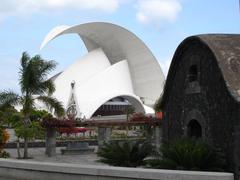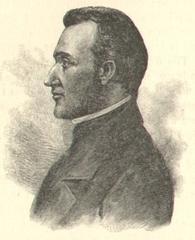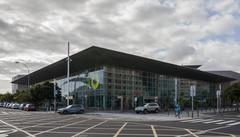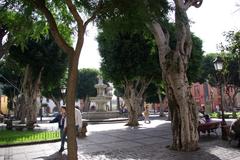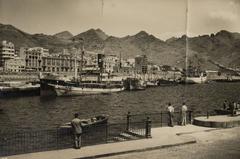Lechera Canaria Visiting Hours, Tickets, and Comprehensive Guide to Santa Cruz de Tenerife Historical Sites
Date: 14/06/2025
Introduction
Nestled in the heart of Santa Cruz de Tenerife, the Lechera Canaria monument is a powerful tribute to the milkmaids who once sustained the Canary Islands’ rural economy. This iconic bronze sculpture, located at the entrance of the Mercado de Nuestra Señora de África, honors the resilience, cultural significance, and labor of the “lechera”—women who, through their daily efforts, bridged rural and urban life in Tenerife between the 19th and early 20th centuries (Gobierno de Canarias).
Not only does the monument encapsulate local heritage and the empowerment of women in challenging economic times, but it also stands as a masterful piece of public art by Guzmán Compán y Zamorano. Its strategic position, surrounded by other major landmarks such as TEA Tenerife Espacio de las Artes, Plaza de España, and Auditorio de Tenerife, makes it a vital stop for cultural tourists and history enthusiasts (London and the World; Lonely Planet).
This guide provides a thorough overview, from the monument’s history and artistic significance to practical advice on visiting hours, accessibility, nearby attractions, and recommended cultural events, helping you create a rewarding experience in Santa Cruz de Tenerife.
Contents
- Introduction
- Historical Context of the Lechera Canaria Monument
- Artistic Significance and Interpretation
- Practical Visitor Information
- Santa Cruz de Tenerife Public Art Trail and Related Sites
- Nearby Attractions and Events
- Practical Tips and FAQs
- Conclusion & Visitor Recommendations
- Sources and Further Reading
Historical Context of the Lechera Canaria Monument
The Milkmaid Tradition in Tenerife
The Lechera Canaria monument commemorates the vital role of the lechera (milkmaid) in Tenerife’s rural and urban societies. For generations, these women delivered fresh milk from their own livestock to city households—a crucial service before the advent of refrigeration and mass-produced dairy. Typically, lecheras would milk their cows or goats at dawn, carrying the milk in tin containers (“cacharros de leche”) balanced in baskets atop their heads or transported by donkey from rural areas such as La Esperanza to urban markets in Santa Cruz and La Laguna (Gobierno de Canarias).
Socioeconomic Impact and Decline
The lechera profession was a vital economic bridge between countryside and city, supporting countless families. With modernization, improved transport, and the introduction of pasteurized milk and packaging, the traditional milkmaid gradually disappeared. By the 1970s and 1980s, industrial dairy processing and stricter health regulations rendered the profession obsolete, though the legacy of community, resilience, and women’s economic contribution remains celebrated (Gobierno de Canarias).
Artistic Significance and Interpretation
Location and Description
The monument occupies a prominent spot at the Mercado de Nuestra Señora de África, the city’s bustling market, symbolizing the heart of local commerce. The sculpture features a barefoot woman in traditional attire, carrying a milk jug and balancing a basket of jugs on her head—a testament to the hard labor and dignity of the lecheras (Minube).
Creation and Materials
Unveiled in June 2001, the statue by Guzmán Compán y Zamorano is cast in bronze, chosen for its durability and capacity to capture detail, fitting seamlessly into the city’s array of public art (Minube).
Symbolism and Cultural Resonance
More than decorative, the monument is a collective memory site, recognizing women’s essential, often overlooked, societal roles. It has become a favored meeting point and photo opportunity for residents and visitors, reinforcing local heritage and identity (London and the World).
Context in Santa Cruz’s Public Art
Santa Cruz de Tenerife’s urban landscape is dotted with public art celebrating everyday life and working-class heritage. The Lechera Canaria complements other monuments, such as the “Homenaje Al Chicharrero,” showcasing the city’s ongoing commitment to cultural preservation (London and the World).
Practical Visitor Information
Visiting Hours and Tickets
- Lechera Canaria monument: Open-air, accessible 24/7, with no admission fee.
- Best time to visit: Early weekday mornings (8:00–10:00 a.m.) for fewer crowds. The market operates from 8:00 a.m. to 2:00 p.m. (London and the World).
- Accessibility: Wheelchair-friendly with level pavements and ramps. Market may be busy during peak hours.
- Guided tours: Some city walking tours include the monument. Special events at the market sometimes highlight Canarian traditions.
- Getting there: Santa Cruz is well-connected via TITSA buses, tram, and is walkable from the city center (TITSA Official Site).
- Visitor etiquette: Respect the monument by not climbing or sitting on it. Engage with locals for deeper insights.
Nearby Attractions
- Mercado de Nuestra Señora de África: The market itself offers a lively glimpse into local gastronomy.
- Plaza de España: Main city square with modernist architecture and an artificial lake (Heather on her Travels).
- TEA Tenerife Espacio de las Artes: Contemporary arts center with exhibitions, a cinema, and library (Lagenda).
- Auditorio de Tenerife Adán Martín: Landmark concert hall by Santiago Calatrava (Lagenda).
- Parque García Sanabria: Lush city park featuring sculptures and the floral clock.
- Casa del Carnaval: Museum dedicated to the Carnival’s history.
- San Cristóbal de La Laguna: UNESCO World Heritage town, accessible by tram, with colonial architecture and museums.
Santa Cruz de Tenerife Public Art Trail and Related Sites
Overview
Santa Cruz’s public art is integrated into daily life, reflecting the city’s dedication to storytelling through sculpture and open-air exhibitions. The 1st International Street Sculpture Exhibition in 1973 established many of the city’s permanent installations (Strolling the Sculpture Trail in Santa Cruz).
Key Highlights
- La Rambla Sculpture Trail: Open-air gallery featuring works by Henry Moore, Francisco Sobrino, and others.
- Parque García Sanabria: Art and nature blend in a lush urban park.
- Special exhibitions and guided tours: Available seasonally, often ticketed, with details at the Tourist Information Office (Cultural Activities in Tenerife).
Accessibility
Main sculpture trails and parks are generally wheelchair accessible, though some have uneven terrain. Early morning and late afternoon offer the best lighting for photography, especially at installations like “Islas” by Jaume Plensa.
Cultural Events and Festivals
- Santa Cruz Carnival: One of the world’s largest, held each February/March, filling the city with parades and music (Heather on her Travels).
- Día de las Letras Canarias: Celebrates Canarian literary heritage each February (Santa Cruz Agenda).
- Tenerife Noir: Crime fiction festival with talks and exhibitions, March–June (Santa Cruz Agenda).
- Veranos del Taoro: Summer festival with concerts and theater (Lagenda).
- Tenerife Yoga Day: Free yoga sessions in Parque García Sanabria (Santa Cruz Agenda).
- Fiesta de la Bicicleta: Family cycling event every June (Santa Cruz Agenda).
- Candlelight Concerts: Classical tributes by candlelight at unique venues (My Guide Tenerife).
- MHT Comedy Drag & Dinner Show: Popular cabaret and dinner event (My Guide Tenerife).
Practical Tips and Frequently Asked Questions (FAQs)
Visiting and Booking
- Hours for Lechera Canaria: 24/7, no ticket needed.
- Guided tours: Book through local operators or the tourism office.
- Accessibility: Monument and surroundings are wheelchair accessible.
- Transport: Use tram or TITSA buses for easy city navigation.
- Event tickets: Purchase online or at box offices for concerts and festivals.
Nearby Essentials
- Markets: Mercado de Nuestra Señora de África for local food and souvenirs.
- Accommodation: Central hotels like Hotel Colon Rambla or stay in La Laguna for a quieter base (Tripadvisor).
- Weather: Mild year-round; bring sun protection and a light jacket in winter (Heather on her Travels).
- Event schedules: Check the Santa Cruz Agenda for the latest updates.
FAQs
Q: What are the visiting hours for Lechera Canaria?
A: The monument is always open and free to access.
Q: Are there guided tours?
A: Yes, some city tours include the monument and nearby historic sites.
Q: Is it accessible for wheelchairs?
A: Yes, with smooth pavements and accessible facilities.
Q: Where to buy tickets for cultural events?
A: Online via official venues or at box offices.
Q: What else should I see nearby?
A: Plaza de España, Casa del Carnaval, TEA, and historic La Laguna.
Visitor Recommendations
- Combine your visit to Lechera Canaria with a stroll through the adjacent market for a taste of local life.
- Use public transport to avoid parking hassles and support sustainability.
- Book ahead for tours and events during peak times.
- Enjoy nearby parks and art trails for a full cultural immersion.
- Participate in local festivals or wellness events for a deeper connection to the community.
Enhance Your Trip
Use interactive maps and apps like Audiala for guidance and up-to-date event information during your visit. Many tourism websites offer virtual tours and image galleries with descriptive alt text (e.g., “Lechera Canaria statue in Santa Cruz de Tenerife”) for accessibility and trip planning.
Conclusion
The Lechera Canaria monument is more than a statue; it is a testament to the enduring spirit, labor, and identity of the Canary Islands’ rural women and a gateway to the rich cultural tapestry of Santa Cruz de Tenerife. Its central location, accessibility, and deep historical resonance make it a cornerstone of any visit to the city. Explore the monument, nearby markets, and vibrant cultural events to experience the living heritage of Tenerife, and use digital resources for the most rewarding journey.
Ready to explore? Download the Audiala app for personalized guides, real-time updates, and exclusive content. Follow us for the latest tips and stories to make your visit unforgettable!
Sources and Further Reading
- Gobierno de Canarias – Lechera tradicional
- London and the World – Best Things to Do in Santa Cruz de Tenerife
- Lonely Planet – Things to Know Before Traveling to Tenerife
- Minube – Monumento a la Lechera Canaria
- Heather on her Travels – Things to Do in Santa Cruz de Tenerife
- Santa Cruz Agenda – Official Events and Cultural Calendar
- TITSA Official Site
- Lagenda
- My Guide Tenerife – June 2025 Events
- Tripadvisor – Santa Cruz de Tenerife Attractions
- Strolling the Sculpture Trail in Santa Cruz
- Cultural Activities in Tenerife
- Guide to Canary Islands
